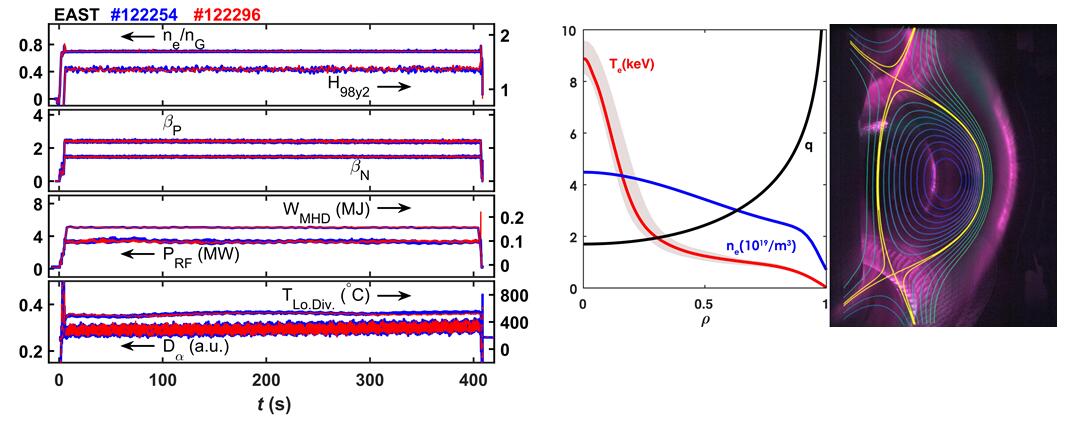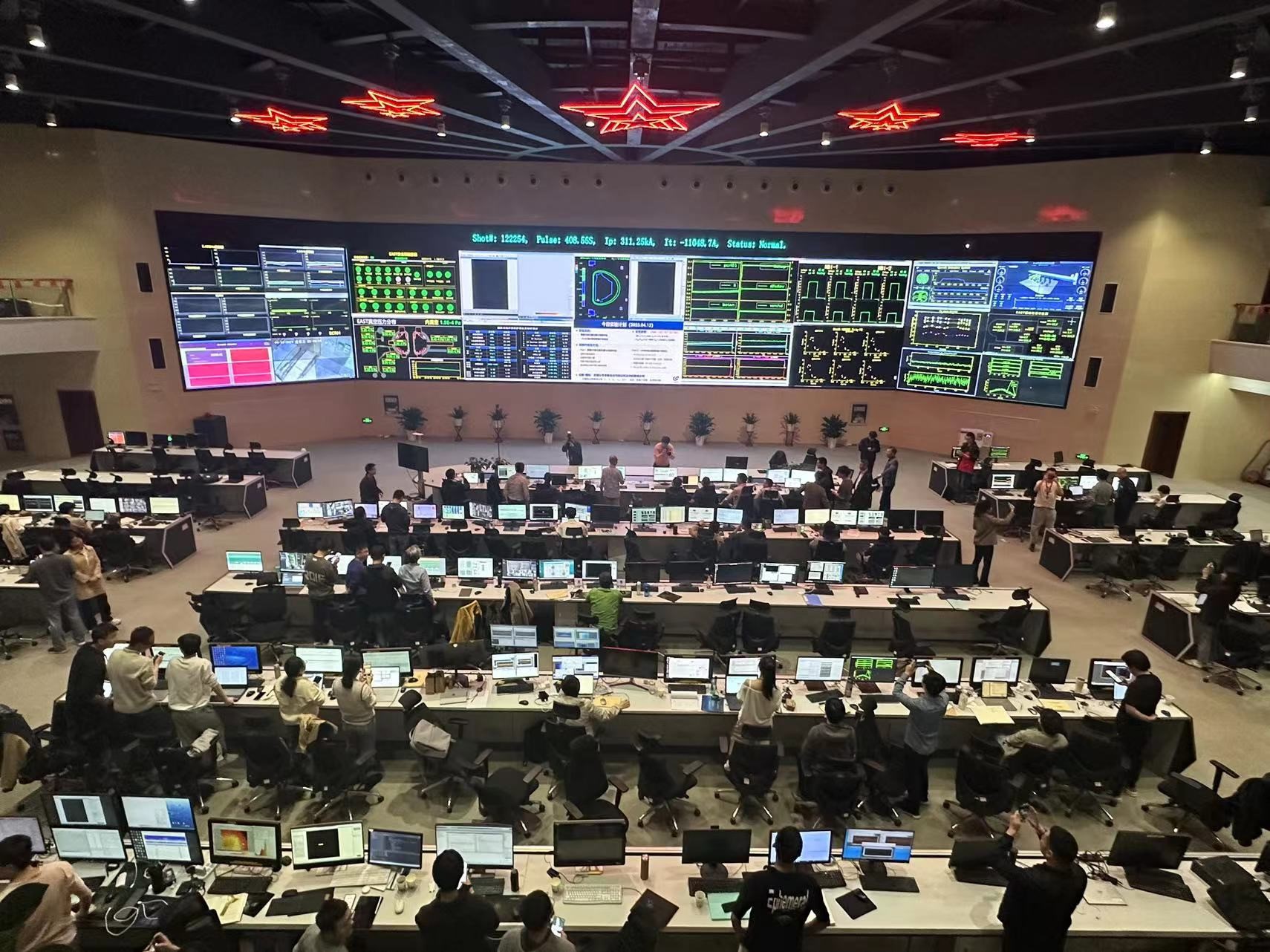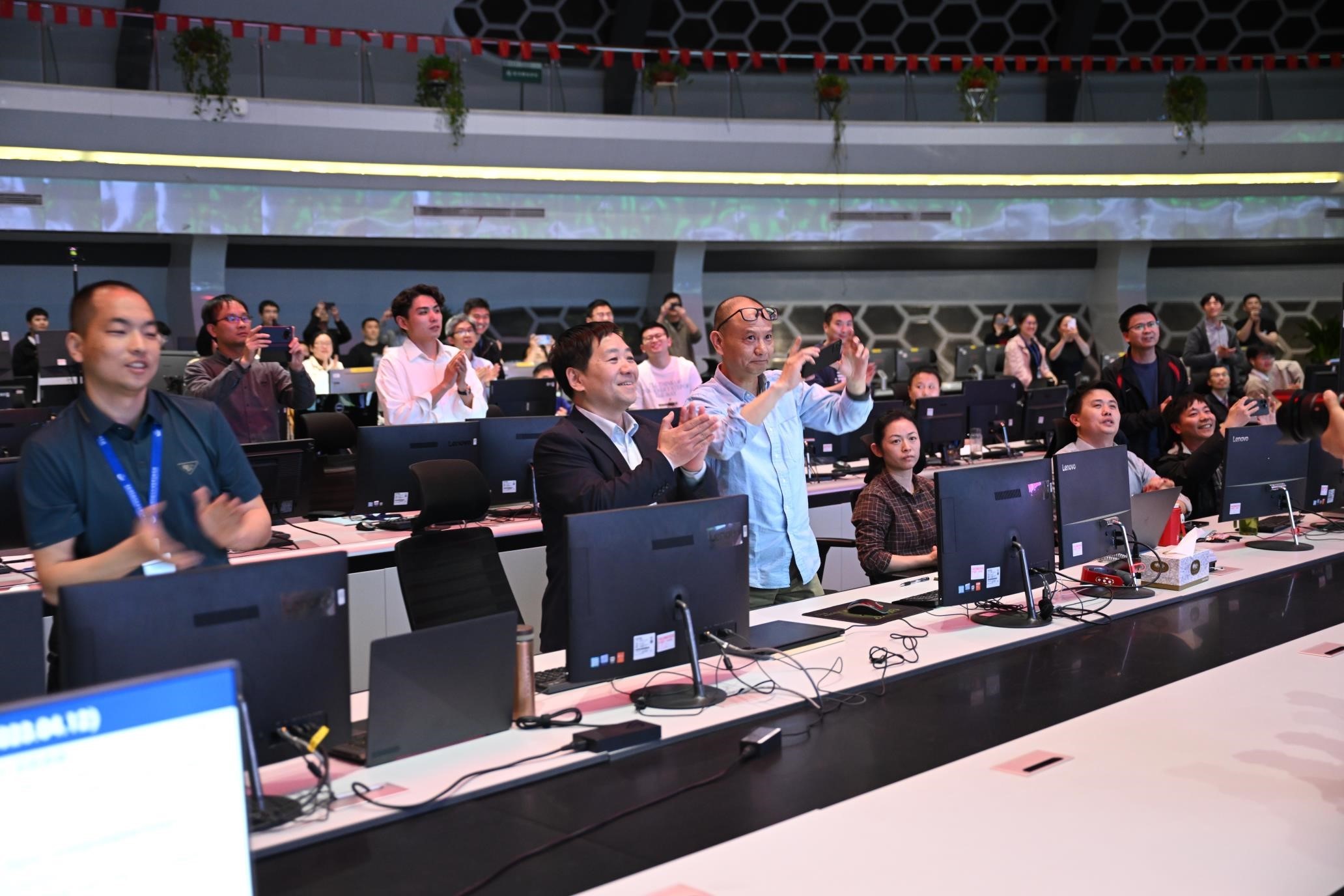
count: [2023-04-17] [Close]
Breakthrough was achieved in Experimental Advanced Superconducting Tokamak (EAST) with new plasma development!
At 21:00 on April 12, the first 403-second steady-state H-mode plasma was achieved on EAST, Institute of Plasma Physics Chinese Academy of Science (ASIPP), which was a new record of pulse length on high performance operation in tokamaks. On the second day at 19:00, the EAST team repeated this operational scenario, demonstrating the reliable capability of the device.
There were several distinctive features in this scenario development, according to Prof. GONG Xianzu, the head of Division of EAST Physics and Experimental Operations, ASIPP.
A full non-inductive plasma was achieved on EAST in W-Divertor with high density and high bootstrap current utilizing Radio Frequency wave heating with zero torque injection.
One of the most notable features of this new plasma development was Energy Confinement Factor H98y2 around 1.35 with internal transport barrier by electron dominant heating. Additionally, the experiment successfully tackled key issues on particle and heat balance with actively cooling tungsten divertor, resulting in a recycling coefficient R of approximately 0.92 and the surface temperature on lower divertor below 600℃.
Moreover, throughout the discharge, the EAST exhibited small Edge Localized Modes (ELMs) along with high core performance, where plasma poloidal beta was around 2.5 and normalized beta reached 1.5.
This accomplishment marked an important milestone in fusion energy research and bringed one step closer to developing a clean, sustainable source of power for the future.
GONG believes that this major breakthrough made in EAST physics experiment further verifies the feasibility of steady-state H-mode operation in the future fusion reactor.
"EAST's success is a joint effort, a statement of most extensive cooperation in scientific fields," said SONG Yuntao, Vice President of HFIPS and Director General of Institute of Plasma Physics (ASIPP). "EAST team has worked together closely with their collaborators at home and abroad over the past decades solving a series of frontier physics & technical issues with a long-time scale, including plasma configuration control, high efficiency of RF heating and current drive, plasma-wall interactions, real-time diagnostics for key plasma parameters."
"In the past years, with the support from the government authorities, Chinese Academy of Sciences and our domestic and international collaborators, EAST device in ASIPP has been continuously upgraded to enhance fusion performance in support of ITER operation and the construction of Chinese fusion reactor," added SONG.
The first experimental campaign on EAST in 2023 will be going on for about two or three months and the second one has been scheduled in the winter of this year.

Breakthrough was achieved in EAST with new plasma development. (Image by EAST Team)

At 21:00 on April 12, the first 403-second steady-state H-mode plasma was achieved on EAST, Institute of Plasma Physics Chinese Academy of Science (ASIPP). This is the EAST Hall, where the experiment has been conducted. (Image by EAST Team)

SONG Yuntao, Vice President of Hefei Institutes of Physical Science (HFIPS), and GONG Xianzu, Chief Operator of EAST experiment, were celebrating in the EAST hall after the breakthrough of "artificial sun". (Image by Xinhua News)
Reported by